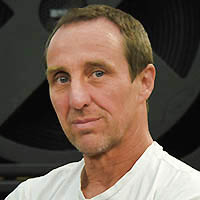Let me clarify perspectives. On one side we have the perspective of believers, the “anything is possible crowd,” where the sky is not the limit, and whether a concept is repeatable or provable is not nearly as important as the fact that it was written, thought, or spoken.
On the other side we have the perspective of skeptics, the self-proclaimed “investigators of verifiable proof ” residing in a world of science, which is based upon identifying dependable and repeatable ideas from which real-world functioning successes can be built.
Both sides inspire massive rivers of money flowing to support their respective causes. Both construct items of perceived value and usefulness.
Both sell or pass freely their thoughts and revelations to attract others to follow and swallow. Whether it is a crystal necklace that heals, an automobile that transports, or a process of thought that helps one navigate life, both trains of thought have long and twisted histories peppered with successes and misconceptions.
However, due to the dramatic differences in perspective, neither side is able to truly resolve the expertise of the other.
The “true skeptic” can no more prove a certain type of music is beautiful than a “true believer” can construct a cell phone that actually functions. It’s easy to understand why science is useful, and easy to feel why adding the complexities of beauty and art improves our lives beyond the monotony of what is purely utilitarian.
So what’s the problem? Well, from my point of view, it is the middle ground, that gray area between facts and recreation, the things we purely feel or think that science has yet to be able to adequately explain to a level that fits what we feel to be occurring.
In working with sound, the credibility of science comes into question when we’re told that something can’t be heard — yet we do hear something. In our confusion, we believe we have taken every variable into account, only to find the most remarkable surprises still remain.
These false assumptions are a feeding ground for a tangled garden of ideas.
The skeptics are doing all they can to excavate and form clean rows of well-organized thoughts, while the believers are immersed in weaving fact and fiction into complex and intoxicating stories and patterns.
Conflicting Influences
Meanwhile a third perspective also exists, wherein both viewpoints are viewed as desirable, sellable, marketable, and therefore useful.
Regardless of the propagation of education over time and eons into the future, I will personally make a jump to the conclusion that our world will always contain some balance of believers and skeptics. It’s impossible to live our lives without the rules of science, just as it’s impossible to live without the influences of art, pleasure and those magical stories that are so deeply woven into our lives.
It is when one side denies the relevance, importance, and/or necessity of the other that voids are created, allowing pseudo-science and other forms of blurred perspective to gain traction.
When art attacks science and vice versa, each undermines its own integrity while attempting to discredit the other. To tell an amazing story is one thing, to claim it is a factual account is entirely another. To measure the various nuances in sound is one thing, to claim the nuances definitively can or cannot be heard is another.
So just as I laugh at the absurdity of people who actually buy colored stones to tape to their audio cables and their ignorance of the astronomical improbability that there will be any form of realizable alteration of the sound, I also believe that it is a failure of the science world to embrace the unknown that allows this ignorance to fester.
Yes, science does try to quantify the importance and realities of art, just as the world of art tries to harness science as well. Science teaches us that there are things that are known and things that are not yet known.
Art teaches us there are things we “know” and “feel” that defy definition and measure.
Science is by nature methodical and cold, while the attraction to the warmth and mystery of art inspires our desire to escape being characterized and labeled as another predictable reproducing food eater called “a human.” We know in our minds that we see, feel and hear so much more than even the most complex analysis system seems to account for.















